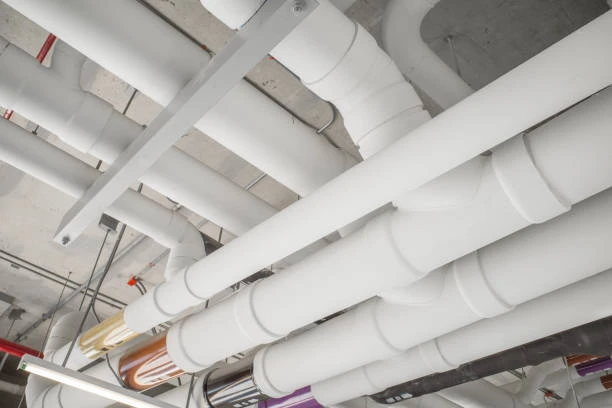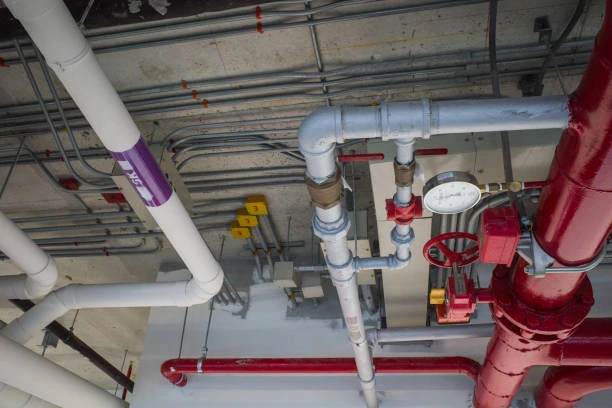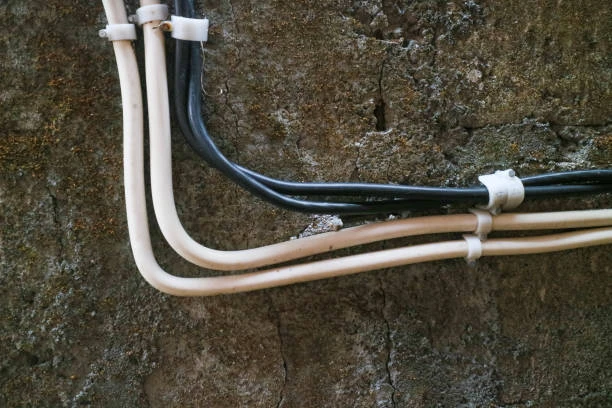Efficient Application of Copper Ball Valves in Industrial Piping
Copper ball valves, including hydraulic valve options, play a vital role in industrial piping systems by offering precise flow control, durability, and efficiency. These valves stand out for their compact design, corrosion resistance, and ability to handle high-pressure fluids, making them a top choice for various industries. In this article, we explore the benefits of copper ball valves, their applications in industrial settings, and how to select the right hydraulic valve for your needs. We also provide a comparison between copper and plastic valves, installation tips, and details about IFAN’s high-quality products that meet international standards.
Frequently Asked Questions About Copper Ball Valves
1. What is a copper ball valve?
A copper ball valve is a shut-off valve with a perforated ball inside that rotates to control the flow of liquids or gases through a pipe.
2. Why choose a hydraulic valve made of copper for industrial piping?
Copper hydraulic valves offer excellent corrosion resistance, durability, and smooth operation, ideal for high-pressure industrial systems.
3. Are all copper ball valves suitable for hydraulic applications?
Not all are designed for hydraulic systems; choose valves rated for high pressure and compatible with your fluid type.
4. How do I select a high-quality hydraulic valve?
Look for valves made from pure copper, certified by standards like ISO, and manufactured by trusted brands like IFAN.
5. Are copper valves better than plastic ones for industrial use?
Yes, copper valves are more durable and handle higher pressures, while plastic valves may degrade faster in demanding conditions.
Definition and Features of Copper Ball Valves
Copper ball valves consist of a hollow, perforated ball within a copper body that regulates fluid flow. Turning the handle a quarter turn opens or closes the valve, allowing for quick and precise control. Copper, as a material, resists corrosion, withstands high temperatures, and endures significant pressure, making it ideal for industrial environments. The smooth inner surface of these valves minimizes fluid resistance, ensuring efficient flow and reducing energy loss.
Hydraulic valve models within the copper ball valve family are specifically engineered for systems requiring precise pressure management. Their robust construction ensures long-term reliability, while the compact design allows easy integration into complex piping layouts. Additionally, copper’s natural antimicrobial properties make these valves suitable for applications involving potable water or sensitive fluids.
Common Uses and Industries for Copper Ball Valves
Copper ball valves, including hydraulic valve variants, find applications across a wide range of industries due to their versatility and reliability. Some common uses include:
Oil and Gas: Control flow in pipelines transporting oil, gas, or refined products under high pressure.
Manufacturing: Manage fluids in automated production lines, ensuring consistent operation.
HVAC Systems: Regulate water or coolant flow in heating and cooling systems for efficiency.
Water Treatment: Handle treated water or chemicals in purification plants with minimal corrosion.
Marine Applications: Resist saltwater corrosion in shipboard piping systems.
The hydraulic valve’s ability to maintain tight seals under high pressure makes it a preferred choice in industries where safety and efficiency are critical. Its adaptability to various fluids and environments further enhances its value in industrial piping systems.
Guide to Selecting Copper Ball Valves
Choosing the right hydraulic valve or copper ball valve requires careful consideration to ensure optimal performance. Follow these guidelines to make an informed decision:
Material Quality: Opt for valves made from high-purity copper or quality alloys to ensure durability and corrosion resistance.
Finish and Appearance: A polished copper finish indicates high manufacturing standards and resistance to tarnishing.
Certifications: Select valves that comply with international standards like ISO 15874 or ASTM F2389 for quality assurance.
Pressure and Temperature Ratings: Ensure the valve can handle the system’s operating conditions, especially for hydraulic applications.
Brand Reputation: Trust manufacturers like IFAN, known for producing reliable, cost-effective valves.
Consult with a piping system expert to match the valve’s specifications with your industrial needs, ensuring compatibility and long-term performance.
Installation Tips for Copper Ball Valves
Proper installation of copper ball valves, including hydraulic valve models, ensures optimal performance and longevity. Follow these tips for a successful setup:
Check Compatibility: Verify that the valve matches the pipe material (copper, PPR, or PVC) and system requirements.
Clean the Pipes: Remove debris from pipes before installation to prevent blockages or damage.
Use Proper Sealants: Apply Teflon tape or thread sealant to threaded connections to prevent leaks.
Align Correctly: Install the valve in the correct orientation, following the manufacturer’s flow direction indicators.
Test the System: After installation, run a pressure test to confirm no leaks and ensure smooth valve operation.
Avoid over-tightening the valve during installation to prevent damage to the threads or body, especially in high-pressure hydraulic systems.
Comparison: Copper Valves vs. Plastic Valves
Feature | Copper Valves | Plastic Valves |
|---|---|---|
Durability | High, lasts decades | Moderate, may degrade |
Corrosion Resistance | Excellent against moisture | Good, but less effective |
Pressure Tolerance | Handles high pressure | Suitable for low pressure |
Temperature Tolerance | Withstands high temperatures | Limited to low temperatures |
Cost | Higher initial cost | Lower initial cost |
Applications | Industrial, hydraulic systems | Residential, irrigation |
Copper valves, especially hydraulic valve models, outperform plastic valves in demanding industrial environments due to their strength and reliability.
Conclusion
Copper ball valves, including hydraulic valve options, offer unmatched efficiency and durability in industrial piping systems. Their low-loss design, corrosion resistance, and ability to handle high-pressure fluids make them a top choice for industries ranging from oil and gas to water treatment. By selecting high-quality valves from trusted manufacturers like IFAN, you ensure reliable performance and cost savings over time. Whether you manage a complex manufacturing line or a simple HVAC system, copper ball valves provide the precision and durability needed for success. Follow the installation tips and choose products that meet international standards to maximize your system’s efficiency.
Connect with IFAN
IFAN is a Chinese manufacturer of plastic pipes, fittings, and valves with 30 years of experience. If you are interested in IFAN copper fittings, copper valves, plastic pipes, and fittings, please contact us. IFAN offers you a variety of standard pipes to meet your specific needs. Click below to learn more about IFAN’s wide range of affordable and cost-effective valve products and piping system-related products.
We will reply to your email or fax within 24 hours.
You can call us at any time if there is any question about our production.
For more information,pls visit our webside https://waterpipefitting.com/
Pls Mailto: [email protected]
Whatsapp: +86 15088288323
IFAN Products International Standards
IFAN products strictly adhere to a comprehensive range of international standards, encompassing ISO 15874, EN 15874, ASTM F2389, DIN 8077/8078, GB/T 18742, NBR 15884, ISO 15494, EN ISO 15494, GB/T 19472, NBR 15494, ASTM 2846 (501), DIN 8079/8080 (502), ASTM F441/F441M SCH80 (503), DIN (504), DIN (505), GB/T 18993, AS/NZS 1477, CSA B137.6, NSF/ANSI 14, TIS 17-2532/1131-2535, BS 3505, BS 4346 (801), ASTM D1785 SCH40 (802), ASTM D1785 SCH80 (803), DIN (804), GB (805), GB (806), GB(901), DWV(902), ASTM D2665 (903), along with ASTM D2241, D2665, D2729, and F441/F441M series, ISO 1452, EN ISO 1452, DIN 8061/8062, GB/T 10002, AS/NZS 1477, JIS K6741, CSA B137.3, and other national and industry norms.














Recent Comments